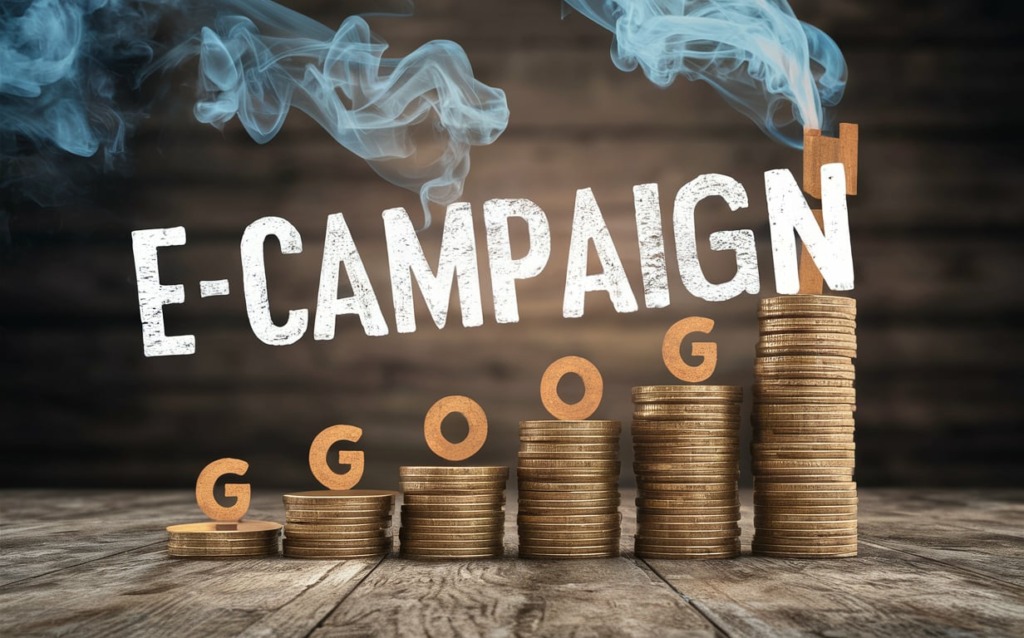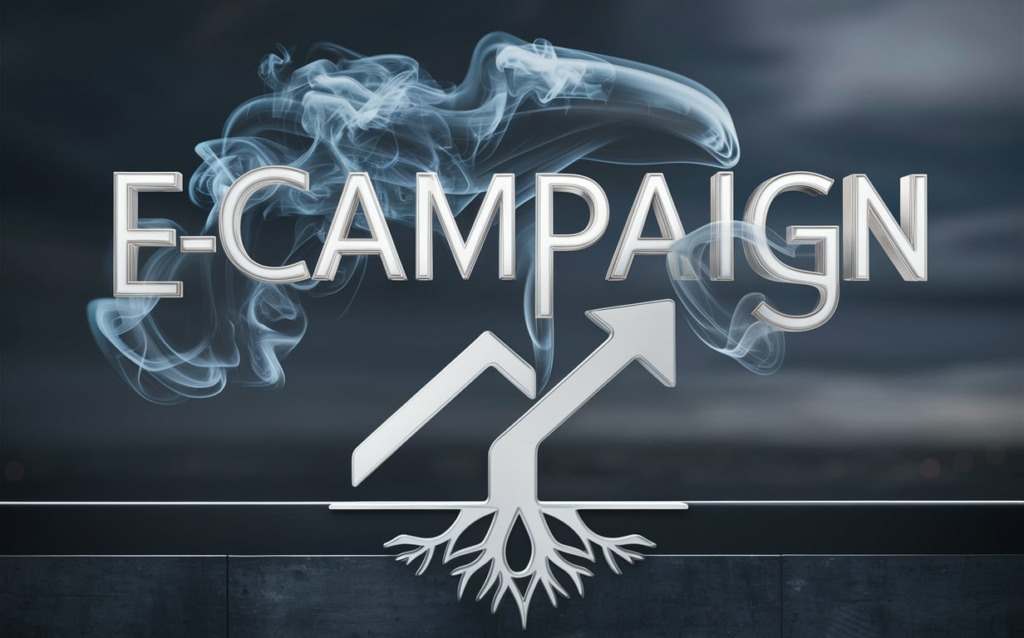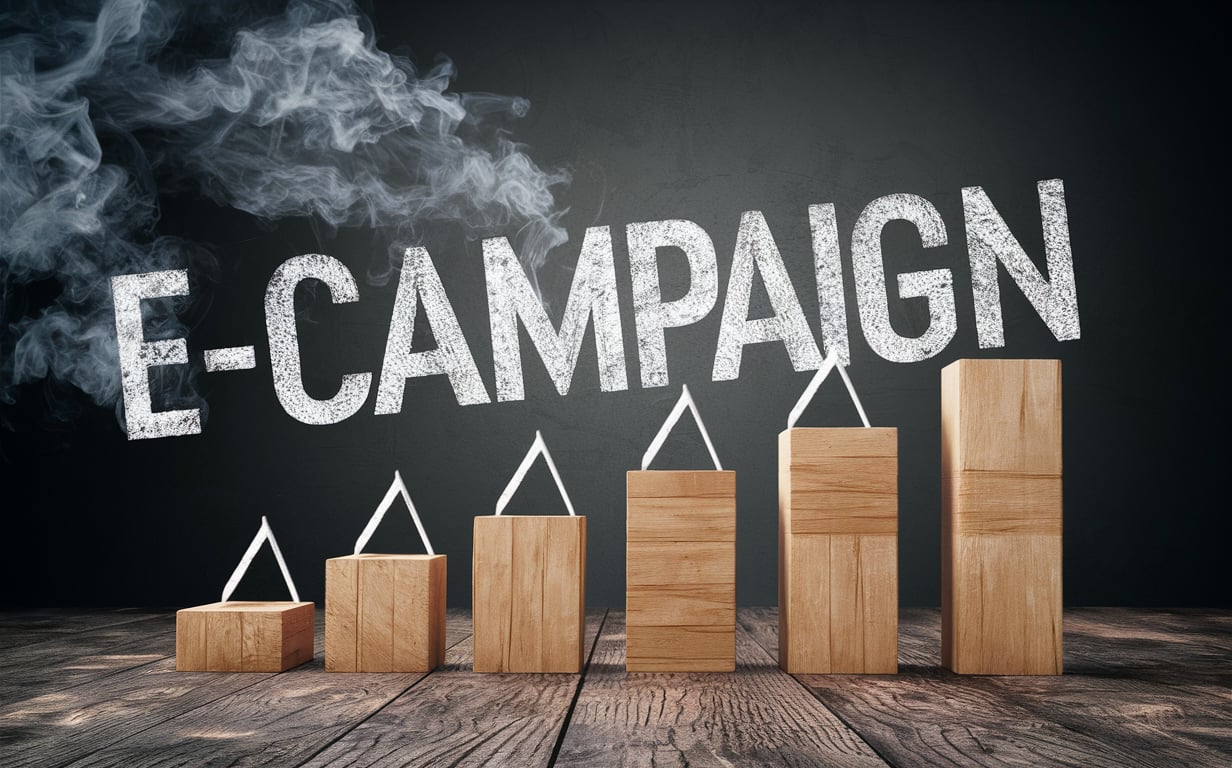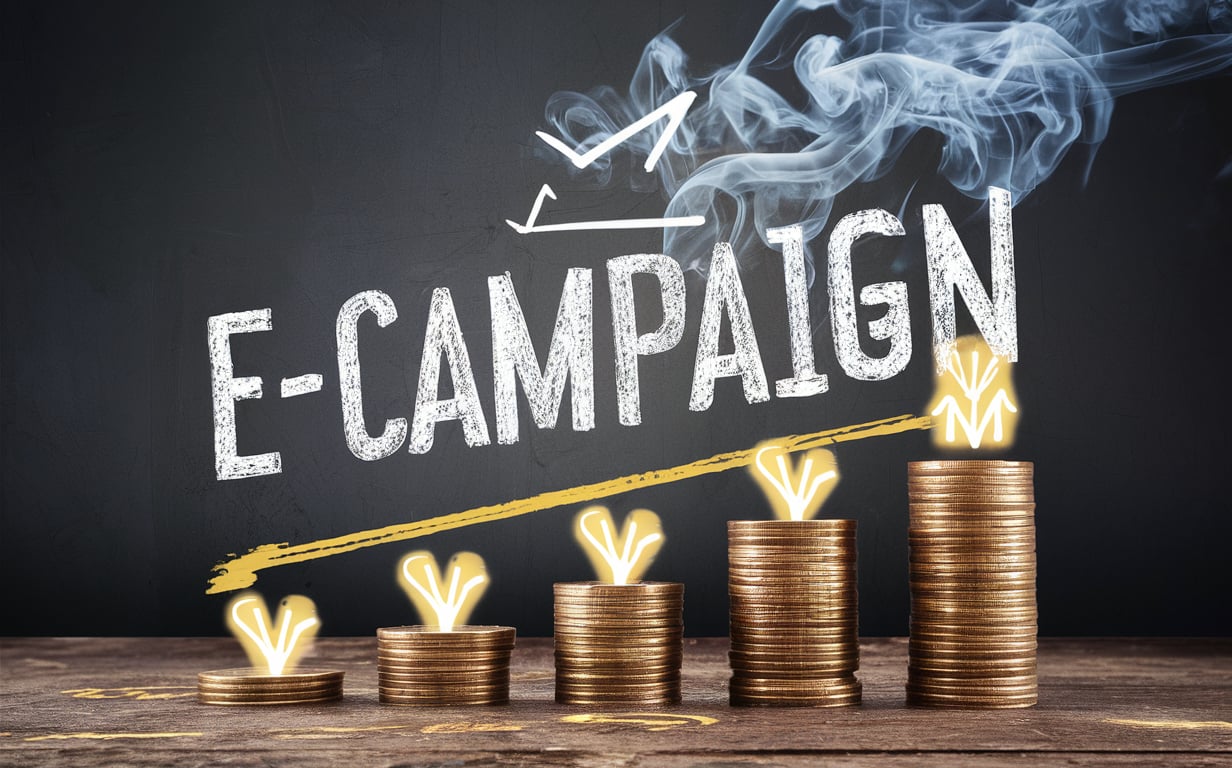Want to execute targeted email campaigns that captivate audiences and accomplish goals?
E-campaigns provide a tactical approach to engaging your list through timely, relevant messaging and value-driven content.
This comprehensive guide will equip you with best practices for planning, managing, and optimizing effective email marketing campaigns.
Whether your objectives include lead generation, sales enablement, event promotion, or customer retention, a strategic e-campaign plan tailored to your audiences can deliver results.
Let’s explore how to create high-converting email sequences, track performance, troubleshoot issues, integrate across channels, and continually refine your approach.
Follow these data-backed e-campaign strategies to boost open rates, click-throughs, and ROI.
What are E-Campaigns and Why are They Important?
Defining E-Campaigns
E-campaigns, also known as email marketing campaigns or outbound email campaigns, refer to planned, structured initiatives to connect with customers or prospects via email. These campaigns involve sending a series of emails to a segmented list to achieve specific goals, such as promoting products, driving event registrations, or nurturing leads.
Unlike regular email newsletters, e-campaigns are time-bound, focused efforts centered around a concrete purpose. They utilize targeted messaging and tailored content to influence their audience over a period of time. For example, a typical e-campaign could aim to increase signups for a webinar by sending a series of reminder emails to registered users leading up to the event.
E-campaigns leverage email’s advantages like affordability, segmentation capabilities, and trackable metrics to execute tactical campaigns with measurable outcomes. The temporary, goal-driven nature of e-campaigns sets them apart from ongoing email programs.
Benefits of E-Campaigns for Businesses
Well-planned and executed e-campaigns offer many advantages:
- Generate leads and increase conversions – E-campaigns allow you to nurture prospects with timely, relevant information to turn them into customers.
- Enhance engagement – Catchy subject lines, personalized content, and call-to-action emails can boost open and click-through rates.
- Drive repeat business – Campaigns focused on customer retention, cross-sells/upsells can improve customer lifetime value.
- Increase brand awareness – Useful, entertaining email content improves brand perception and recall.
- Deliver promotions – Campaigns can promote discounts, sales, new products effectively.
- Segment messaging – Targeted emails resonate better with niche demographics.
- Optimizable strategy – You can test and tweak campaigns to improve performance.
- Measurable results – Detailed email metrics like open, click, and conversion rates quantify results.
Email Marketing Campaign Examples
Here are some examples of effective e-campaigns across different business objectives:
- Product launch – Drip series about features, discounts to drive adoption.
- Webinar promotion – Reminder emails with value-driven content to increase registrations.
- Lead generation – Nurture prospects with industry tips to develop sales pipeline.
- Holiday promotions – Offer holiday discounts or gift ideas via campaigns.
- Loyalty campaigns – Provide exclusive offers to reward loyal subscribers.
- Re-engagement campaigns – Win back inactive subscribers with tailored outreach.
- Customer surveys – Send post-purchase feedback surveys to improve products/services.
- Content upgrades – Promote new blog posts, guides, tools with update emails.
With creative objectives and messaging, e-campaigns can support diverse business goals while increasing brand engagement.

Developing an Effective E-Campaign Strategy
Crafting a robust strategy is key to e-campaign success. Follow these best practices when planning your next email marketing campaign.
Setting Campaign Goals and KPIs
Begin by defining your campaign objectives and key results. Quantifiable goals keep you focused and help measure performance.
Campaign goals could include:
- Generate 50 free trial signups
- Increase webinar registrations by 20%
- Grow Q4 sales revenue by 30% over last year
Track relevant KPIs to gauge progress like open rates, click-through rates, conversion rates, revenue generated, etc. If goals are missed, data-backed metrics help identify areas for improvement.
Choosing the Right E-Campaign Type
Select campaign types that align with your goals:
- Promotional – Offer incentives to increase sales
- Educational – Provide value to nurture leads
- Survey – Gain customer feedback to improve products
- Re-engagement – Bring back inactive subscribers
- Retargeting – Remarket to unconverted prospects
Match type to audience needs. Existing customers may respond better to promotional emails while prospective leads prefer educational content.
Segmenting Your Email List
Divide your list into distinct segments and tailor messaging for each.
Ways to segment include:
- Demographic data like location, age, gender
- Purchasing history and behaviors
- Engagement metrics like open and click-through rates
- Buyer stages such as leads, prospects, or customers
Hyper-personalized content performs better. Consider interests, pain points, and motivations for each segment.
Planning Campaign Content and Timing
Map out content across the campaign to pique interest and drive conversions.
- Hook audience with an interesting introductory email
- Follow with convincing content highlighting your value proposition
- Add testimonials and social proof to build credibility
- Include scarcity elements like limited-time offers to prompt action
- Conclude with clear calls-to-action and offers
Optimize send times for each segment – morning for C-level execs, evenings for consumers, etc. Time emails appropriately, neither too far apart nor too close together.
Designing and Testing Email Creatives
Craft catchy subject lines that compel opens. Test variations to compare open rates.
Keep copy tight and scannable. Break content into short paragraphs with headers.
Embed images, GIFs, and videos to increase engagement.
Focus on clean, mobile-friendly design. Preview across devices.
Drive action with clickable call-to-action buttons.
A/B test creatives and send variants to sample segments. Double down on what works.
Optimizing Deliverability
Improve email deliverability with:
- Accurate, double opt-in lists to maintain sender reputation
- Authentication methods like SPF, DKIM, and DMARC
- Warming up new IP addresses before use
- Monitoring blacklists to get removed if listed
- Limiting sending volume and scheduling sends appropriately
- Grouping similar content to avoid triggering spam filters
With careful planning and execution, you can craft high-converting e-campaigns that deliver value while achieving your bigger goals. Test, iterate, and continuously optimize your email marketing strategy for greater success.

Managing Successful E-Campaign Execution
Once your e-campaign is planned, focus on flawless execution with these tips:
Sending Time Optimization
Pick the best sending times for each segment. Test different days and times to determine optimal windows.
Tuesday and Thursday mornings tend to have higher engagement. Avoid weekends or early mornings.
Track open and click rates to identify trends and adjust schedules accordingly.
Use timezone personalization to send emails when subscribers are typically active. Early morning for East Coast, evenings for West Coast.
Leveraging Automation
Automate repetitive tasks to streamline execution:
- Use A/B testing tools to send subject line variants automatically
- Set up timed email sequences with a drag-and-drop workflow builder
- Trigger real-time behavioral emails like cart abandonment reminders
- Integrate with a CRM to sync subscriber data and automate segment creation
Automation frees up time for strategic work and creates consistent customer experiences.
Monitoring Engagement and Troubleshooting Issues
Actively track campaign metrics including:
- Open and click-through rates
- Conversion rates
- Bounce and unsubscribe rates
- Social sharing activity
Dive deeper into underperforming areas to diagnose issues:
- Low open rates could indicate irrelevant messaging or subject lines
- Minimal click-throughs may signal unengaging content
- High unsubscribe rates can point to delivery issues or spam triggers
- Many bounces may mean inaccurate email lists
Address identified problem areas to get campaigns back on track.
Managing Compliance and Avoiding Spam Triggers
Follow anti-spam best practices:
- Never buy or rent email lists
- Provide clear unsubscribe links in each email
- Get explicit consent before adding subscribers
- Give recipients control over message frequency
- Ensure subject lines match content
Scrub lists regularly for risky email domains and disposable addresses. Maintain sender reputation to keep deliverability high.
Use double opt-in flows when capturing leads. Verify addresses to prevent errors.
Integrating With Other Channels
Tie e-campaigns to your cross-channel strategy:
- Promote campaigns via social posts and chatbots
- Retarget website visitors with coordinated emails
- Link to landing pages from campaign emails for conversions
- Record campaign metrics in your CRM to enrich subscriber profiles
Multichannel strategies generate up to 300% more revenue than single-channel efforts.
With optimization, automation, and integration, you can execute campaigns that engage audiences and accomplish goals. Measure performance, iterate quickly, and scale your email marketing success.

Measuring and Optimizing Campaign Performance
Analyze campaign metrics regularly to identify optimization opportunities.
Tracking Engagement Metrics
Gauge audience interest with engagement metrics like:
- Open rates – Benchmark around 20-25% for cold audiences
- Click-through rates – Shoot for 2-5%
- Bounce rates – Keep below 5% with accurate contact lists
- Unsubscribe rates – Should be <0.2% per campaign
- List growth rates – Positive trends indicate strong outreach
Compare performance across campaigns and against industry benchmarks. Significantly lower metrics warrant a deeper look.
Analyzing Conversion Rates
Calculate conversion rates for different campaign goals:
- Webinar signups / unique opens
- Trials started / total clicks
- Orders completed / recipients
- Revenue per email sent
Surface any target areas lagging. Identify subscriber segments with poor conversion. Correlate metrics to pinpoint weak spots.
Optimizing Based on Insights
Use learnings to refine campaign elements:
- Improve subject lines and preheaders that don’t compel opens
- Rework content that doesn’t adequately engage
- Re-evaluate segments showing poor response
- Adjust cadence if send frequency seems off
- Test new designs if click-through rates are low
- Switch up send times or days for low open times
Isolate variables through A/B testing to determine optimal versions.
A/B Testing Subject Lines and Content
Subject line testing ideas:
- Emotional vs. functional benefit focused
- Numbers vs. social proof vs value demonstration
- Short vs. long formats
- Problem-focused vs. solution-focused
Content tests:
- Text-heavy vs. visual formats
- Long-form vs. short snippets
- Interactive elements like calculators or quizzes
- Video vs. images vs. text-only
Keep top-performing variants and eliminate those falling behind.
Continuously track and optimize campaigns to maximize ROI. Use data-backed insights to engage audiences better over time.
E-Campaign Best Practices and Common Pitfalls to Avoid
Follow proven e-campaign best practices to boost results and avoid missteps.
Personalization Best Practices
Leverage personalization to make content resonant:
- Use merge tags to include first names, locations, interests etc. in subject lines and body content
- Segment lists by user attributes and preferences for tailored messaging
- Craft targeted content buckets focused on each segment’s needs
- Send behavioral triggers based on user actions and characteristics
- Automate event-based emails like birthday messages
Well-executed personalization can deliver 4-5x higher open rates and increase sales.
List Hygiene and Anti-Spam Measures
Keep your lists clean to maintain deliverability:
- Never buy or rent email lists
- Validate addresses during lead capture to prevent errors
- Remove hard bounces immediately and soft bounces after 3 tries
- Enable unsubscribe links in emails as per CAN-SPAM act
- Honor opt-out requests right away
- Limit sending IPs to avoid getting blacklisted
Follow best practices to safeguard sender reputation.
Subject Line and Content Optimization
Craft compelling subject lines to pique interest:
- Limit length to under 50 characters
- Incorporate power words like “Instant” or “Guaranteed”
- Use brackets and dashes for scannability
- Test emotional triggers vs. informational hooks
Keep copy tight and focused:
- Break content into short paragraphs and bullet points
- Share just enough information to prompt action
- Guide readers with bold headers and highlighted text
- Use simple language that’s easy to digest
Implementation and Troubleshooting Tips
Streamline execution and tackle issues promptly:
- Give recipients control over message volume and frequency
- Ensure subject line accurately reflects content
- Review spam score and avoid flagged words
- Warm up new IP addresses properly before use
- Monitor ISP complaint feedback and inbox placement
Nip problems in the bud to keep e-campaigns effective and compliant.
With personalized, relevant messaging, ethical practices, and optimization, your e-campaign efforts will engage audiences and drive results. Test, track, and continuously refine your approach for communications that convert.

The Future of E-Campaigns and Email Marketing
Let’s explore emerging e-campaign trends and innovations on the horizon.
Emerging Technologies and Trends
Several technologies could impact email marketing:
- AI-powered copywriting and design to automate high-converting creatives
- Virtual reality previews for immersive content testing
- Enhanced analytics with machine learning for deeper campaign insights
- Robust email append data for granular personalization
- Tighter CRM integrations and unified customer data platforms
- Increased interaction and shopping capabilities right in emails
- Email content tailored by sentiment analysis and facial recognition
Predictions and Innovation Focus Areas
Here are a few predictions for the future of e-campaigns:
- Shift from batch-and-blast to highly personalized, intent-based communication
- Email taking on a more conversational, interactive feel through AI
- Better attribution modeling across channels with unified data
- Rise of digital assistants optimizing send times for recipients
- Video becoming a bigger part of engaging email content
- Email design leveraging augmented reality (AR) elements
- Growth of shoppable emails enabling in-message transactions
Key focus areas for innovation include:
- Optimizing deliverability as inbox clutter increases
- Maintaining relevancy despite evolving user expectations
- Tighter integration across channels and devices
- Leveraging data and technology to drive hyper-personalization
- Building more visual, interactive, messaging-like experiences
The future of e-campaigns centers on using technology to craft targeted, relevant communications that provide value. Companies need to take an integrated, data-driven approach to steer innovations that engage audiences.

Key Takeaways
- E-campaigns are structured, goal-driven email marketing initiatives that engage audiences and drive conversions over time.
- Well-planned campaigns focused on subscriber value can increase open rates, click-through rates, and ROI.
- Begin by setting specific goals and KPIs to track so you can quantify campaign effectiveness.
- Choose the right campaign type based on your audience and business objectives.
- Hyper-personalize content through segmentation and behavioral triggers for 4-5x higher open rates.
- Map out a purposeful email sequence and optimize send times for each audience.
- Compelling subject lines, tight copy, and clear CTAs are key to email creative success.
- Leverage automation to streamline execution for more consistent experiences.
- Actively monitor campaign metrics to surface optimization opportunities.
- Regular A/B testing enables you to refine content and maximize results.
- Ethical email practices, list hygiene, and proper deliverability protocols are essential.
- The future will focus on highly personalized, interactive email experiences through emerging innovations.
- With testing and optimization, e-campaigns can boost engagement and achieve business goals. Here are some frequently asked questions for the e-campaign guide:
Frequently Asked Questions
What are some examples of effective e-campaigns?
Some examples include product launches, webinar promotions, lead nurturing campaigns, holiday promotions, customer re-engagement campaigns, and content upgrades like new blog posts or guides.
How do you choose the right type of e-campaign?
Align the campaign type to your goals and audience – promotional for sales, educational for nurturing leads, surveys for feedback, re-engagement efforts for inactive users, etc.
How can you optimize campaign content?
Use compelling hooks, address pain points, include social proof, leverage scarcity, and conclude with clear CTAs. Make copy tight, scannable, and focused.
What are some tips for creating high-converting emails?
Use catchy subject lines, compelling imagery, succinct copy, bold headers, highlighted text, clickable buttons, and mobile-friendly responsive design. Preview on different devices.
How do you calculate the ROI of an e-campaign?
Look at conversion rate metrics liketrials generated or sales closed from sent emails. Cost per lead or customer acquired are useful too. Compare campaign costs to revenue driven.
What steps ensure your e-campaigns stay compliant?
Follow CAN-SPAM guidelines, enable recipient unsubscribes, gain explicit consent before adding contacts, control message frequency, and ensure subject lines match content.
How can you optimize deliverability for e-campaigns?
Use double opt-in, validated lists, proper IP warming, removal from blacklists, controlled send volumes, grouping similar content, and mimizing risky domains or disposable email addresses.
Why is list segmentation important?
It allows you to tailor content and messaging specifically based on user attributes like demographics, behaviors, preferences, buyer stage, etc. Hyper-personalization boosts engagement.
What are some important metrics to track?
Key indicators include open rate, click-through rate, bounce rate, unsubscribe rate, conversion rate, revenue per email, and list growth. Use them to benchmark and optimize.

